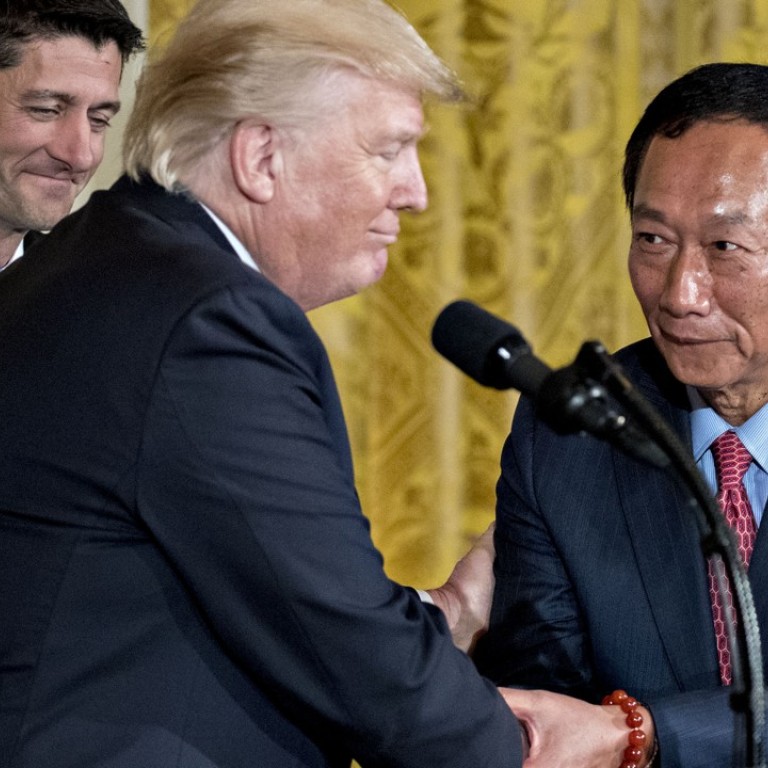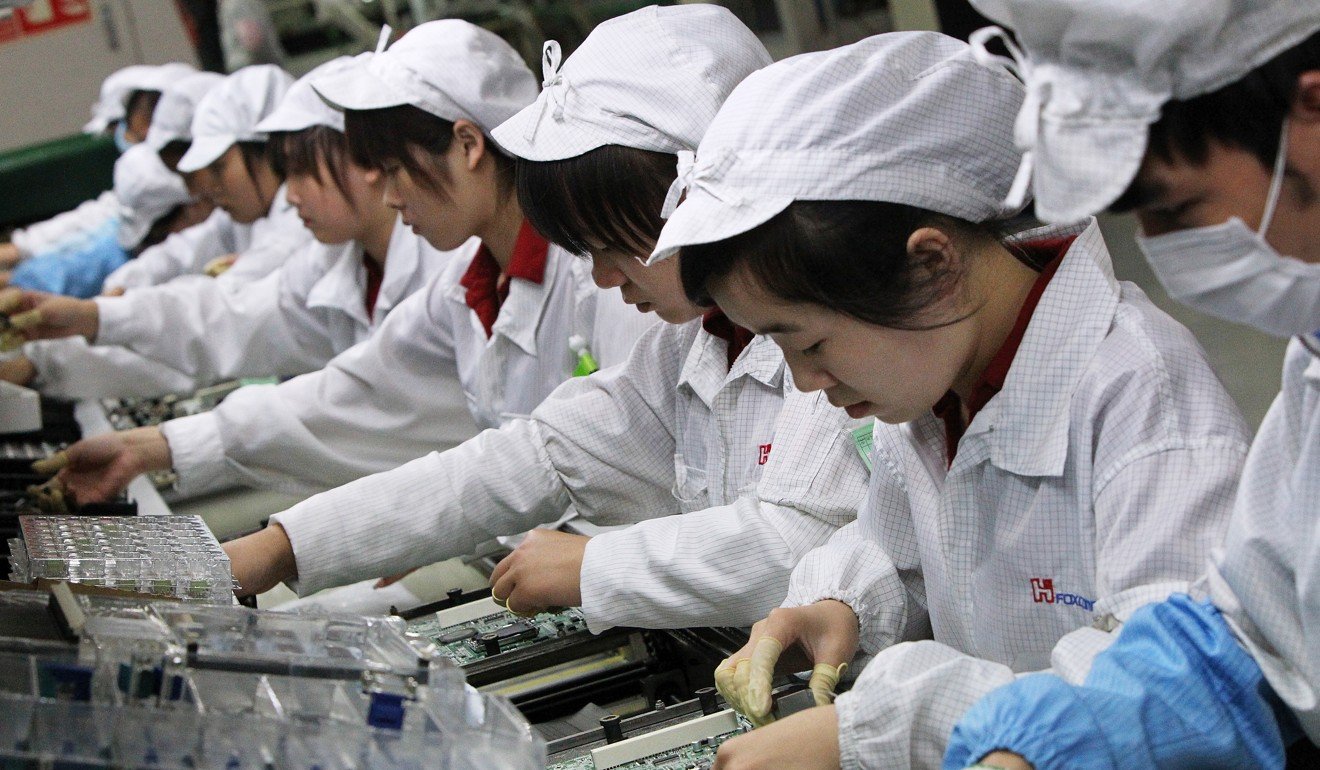
Foxconn bets big on US expansion, Trump and unfettered demand for hi-tech devices
World’s largest contract electronics manufacturer – started in 1974 with just US$7,500 – is investing US$10b in the first of a series of strategic initiatives in the world’s largest economy
Foxconn Technology Group founder and chairman Terry Gou Tai-ming could be making the biggest bet of his career as his company builds a highly advanced manufacturing base in the Midwestern United States to rival its operations in China, while dodging the slings and arrows of American politics.
Gou joined US President Donald Trump on Wednesday in Washington to unveil Foxconn’s US$10 billion investment in the state of Wisconsin, where a state-of-the-art liquid crystal display (LCD) panel manufacturing plant will be built over the next four years.
Taiwan-based Foxconn, known formally as Hon Hai Precision Industry, will receive a generous US$3 billion, 15-year incentive package of tax credits from Wisconsin in the first of a series of expansion initiatives it plans to pursue in the US.
But Paul Haswell, a partner at international law firm Pinsent Masons, told the South China Morning Post that "since the deal seems to depend so heavily upon tax breaks and initiatives to attract Foxconn to the US, there’s every risk that with a change of government those tax breaks could dematerialise”.

Such a perception did not seem to faze Gou, as he gave credit to Trump, Wisconsin Governor Scott Walker and the recently established Office of American Innovation, headed by senior adviser to the president Jared Kushner, for supporting his company’s project.
Gou, with a net worth of US$10.5 billion as estimated by Forbes, likely sees this US expansion as par for the course to bolster Foxconn’s position as the world’s largest electronics manufacturing services provider.
“They get a public relations win in an environment where the reason Trump won was on job concerns,” said John Brebeck, Taipei-based senior adviser with Hong Kong investment consultancy Peace Field. “It can make Apple look better, and Apple is their biggest client. It makes both of them look good.”
Foxconn, which Gou established in 1974 with US$7,500 in start-up money, has helped drive the development of China over the past two decades into a global hi-tech production powerhouse, where Apple sources its iPhones and mainland firms develop consumer electronics devices for the world.
On the mainland, Foxconn and its subsidiaries employ around a million workers in factories spread across various cities. These include plants in Zhengzhou, Shenzhen, Chengdu, Tianjin, Taiyuan and Yantai.
The new Foxconn facility at a site dubbed “Wisconn Valley” will be massive, according to estimates from the governor’s office. The complex will cover almost 1.6 square miles and have a floor area of 20 million square feet, roughly the size of three Pentagons.
The Pentagon, headquarters to the US Department of Defence, is an office building that covers about 6.5 million sq ft.
Foxconn will build the first LCD panel fabrication plant in the US. These panels will be used in a wide range of applications, including the latest generation televisions, self-driving cars and aircraft systems.
The facility is expected to eventually employ 13,000 workers, each of which will be paid US$53,875 a year on average.

The Wisconsin complex will focus on advancing intelligent manufacturing systems, processes and technology, according to Gou.
“On panels, Hon Hai has done a lot of work in automation,” said Yen Cheng-hui, a strategist at Taipei think tank Yuanta Polaris Research Institute. “Its effort to automate will move forward. If it can cooperate with American schools that’s even better.”
Yen pointed out that universities in nearby Chicago can provide skilled workers, and that US television and display maker Vizio could be a client for Foxconn’s panels.
Foxconn first established operations in the US in 1988, and has a current workforce of around 3,000, with many more indirect employees working for its suppliers which form part of the firm's global supply chain.
It has existing operations in the states of Alabama, California, Indiana, Massachusetts, Michigan, North Carolina, Pennsylvania, Texas and Virginia. These operations include manufacturing, assembly, research and development, servicing and sales.


